MiG-21bis: The Cold War Icon and Supersonic Workhorse
Part-Efficient Aircrafts~!!
(I stole it from Monarchii)
The MiG-21bis is a key variant of the MiG-21, one of the most iconic and widely produced Soviet-era jet fighters. The MiG-21bis, introduced in the 1970s, is an upgraded version of earlier MiG-21 models, which had already seen widespread use across the globe. It was designed to maintain relevance during the Cold War and was the final production model of the MiG-21 series, incorporating numerous improvements over its predecessors, especially in terms of avionics, radar, weapons, and fuel capacity.
Development and Role:
The MiG-21bis was developed as part of the MiG-21’s evolution to keep pace with technological advancements, particularly the rapid improvements in air-to-air missiles, radar systems, and aviation technology. The MiG-21bis was intended for multiple roles, including air superiority, interception, and ground attack, making it a versatile asset in the Soviet and Warsaw Pact air forces. While originally conceived as a lightweight, high-speed interceptor, the MiG-21bis was tailored to meet the need for more sophisticated avionics and better combat performance in all domains.
The MiG-21bis could perform air defense tasks, intercepting enemy bombers and fighters, as well as provide support in ground-attack missions. It was intended to counter Western designs such as the F-4 Phantom and F-104 Starfighter, which had superior radar and missile systems compared to earlier MiG-21 variants.
Design Features and Improvements:
1. Powerplant:
The MiG-21bis is powered by the Tumansky R-25-300, a turbojet engine capable of producing 9,000 kgf (kilograms of thrust), which allows it to reach speeds of up to Mach 2.05 (approximately 2,170 km/h or 1,350 mph). This gives the MiG-21bis impressive performance in terms of speed and climb rate, remaining a highly agile fighter capable of outrunning many adversaries.
2. Airframe:
While the overall design of the MiG-21bis closely resembles earlier MiG-21 models, it has some refinements in terms of structural strength and aerodynamics. The airframe features a delta wing design, which provides excellent supersonic performance and maneuverability at high speeds, but it is less agile at low speeds compared to aircraft with more conventional wing designs.
3. Avionics and Radar:
One of the key upgrades in the MiG-21bis is the integration of more advanced avionics, including the RP-22S Radar, a more capable and powerful radar system compared to earlier MiG-21 variants. This radar allows the aircraft to detect and track targets at greater ranges and with greater accuracy, improving the aircraft’s ability to engage aerial threats.
The MiG-21bis also features a modernized flight control system, which improves stability and handling characteristics. The aircraft is fitted with a PrNK-21 fire-control system, offering better tracking and targeting solutions. This allows the MiG-21bis to effectively engage both air-to-air and air-to-ground targets, improving its multirole effectiveness.
4. Weapon Systems:
The MiG-21bis is equipped with a broad range of armaments, making it effective in a variety of combat situations. It carries the GSh-23 twin-barrel autocannon with 200 rounds of ammunition, providing close-in combat capability. The aircraft can also carry a variety of air-to-air and air-to-ground missiles.
Air-to-Air Missiles: The MiG-21bis is capable of carrying advanced air-to-air missiles such as the R-60 (AA-8 Aphid), a short-range infrared-guided missile, and the R-23 (AA-7 Apex), a medium-range radar-guided missile. These missiles, coupled with the aircraft's enhanced radar, allow the MiG-21bis to engage enemy aircraft at both close and medium ranges.
Air-to-Ground Capability: While primarily an interceptor, the MiG-21bis is equipped to handle air-to-ground strike missions. It can carry bombs, rockets, and various types of guided munitions, making it suitable for close air support (CAS) and ground attack roles, especially in scenarios where precision targeting is required.
5. Increased Range:
One of the notable improvements in the MiG-21bis over previous models is its increased fuel capacity, allowing for a larger combat radius. The aircraft can carry up to 3,150 liters of fuel internally, with additional external fuel tanks increasing its operational range. The aircraft is capable of reaching a maximum range of approximately 1,000 km (620 miles) without external tanks, making it more effective for extended missions.
Operational Performance:
The MiG-21bis is designed for high-speed interceptions, and it remains one of the fastest aircraft of its era. The aircraft’s ability to reach Mach 2 speeds makes it effective in intercepting enemy bombers and reconnaissance aircraft. Its agility at high speeds and ability to carry a range of modern weapons made it a formidable opponent in aerial combat during the Cold War.
Despite its relatively small size, the MiG-21bis is highly maneuverable, able to perform sharp turns and sudden changes in direction, especially at high speeds, though it does lose some of its maneuverability at low speeds. This characteristic made it an ideal aircraft for dogfighting and engaging enemy fighters in close-range aerial combat.
Service History:
The MiG-21bis saw extensive service in both the Soviet Air Force and the air forces of several countries across the globe, especially those aligned with the Warsaw Pact. The aircraft's low maintenance costs, reliable performance, and versatility ensured its widespread use, with more than 1,000 units of the MiG-21bis produced.
In addition to the Soviet Union, the MiG-21bis served in countries such as India, Egypt, Iraq, and several others in Africa, Asia, and Eastern Europe. These aircraft were involved in numerous conflicts, including the Yom Kippur War, the Iran-Iraq War, and various proxy wars in Africa and Asia.
Even after the end of the Cold War, the MiG-21bis continued to be in service with many countries due to its cost-effectiveness and the ongoing need for a capable, though relatively inexpensive, fighter aircraft. Some nations have modernized their MiG-21bis fleets with updated avionics and weapons systems to extend their operational life.
Legacy:
While the MiG-21bis was eventually superseded by more advanced fighter designs such as the MiG-29 and Su-27, it remains an iconic aircraft that shaped the Cold War aerial arms race. Its simple yet effective design made it one of the most widely used jet fighters in history. Even today, variants of the MiG-21bis are still in service with some countries, though its role is typically limited to secondary duties and it is gradually being replaced by more modern fighters.
The MiG-21bis, as an upgraded version of the MiG-21, represents the culmination of the MiG-21 series' evolutionary design, combining speed, agility, and versatile armament with improved avionics and radar. It serves as an important symbol of Soviet airpower during the Cold War era.
Specifications
Spotlights
- Trainzo 9 months ago
General Characteristics
- Created On Android
- Wingspan 25.3ft (7.7m)
- Length 55.8ft (17.0m)
- Height 13.9ft (4.2m)
- Empty Weight N/A
- Loaded Weight 23,207lbs (10,526kg)
Performance
- Power/Weight Ratio 2.905
- Wing Loading 61.5lbs/ft2 (300.2kg/m2)
- Wing Area 377.4ft2 (35.1m2)
- Drag Points 3757
Parts
- Number of Parts 78
- Control Surfaces 7
- Performance Cost 437

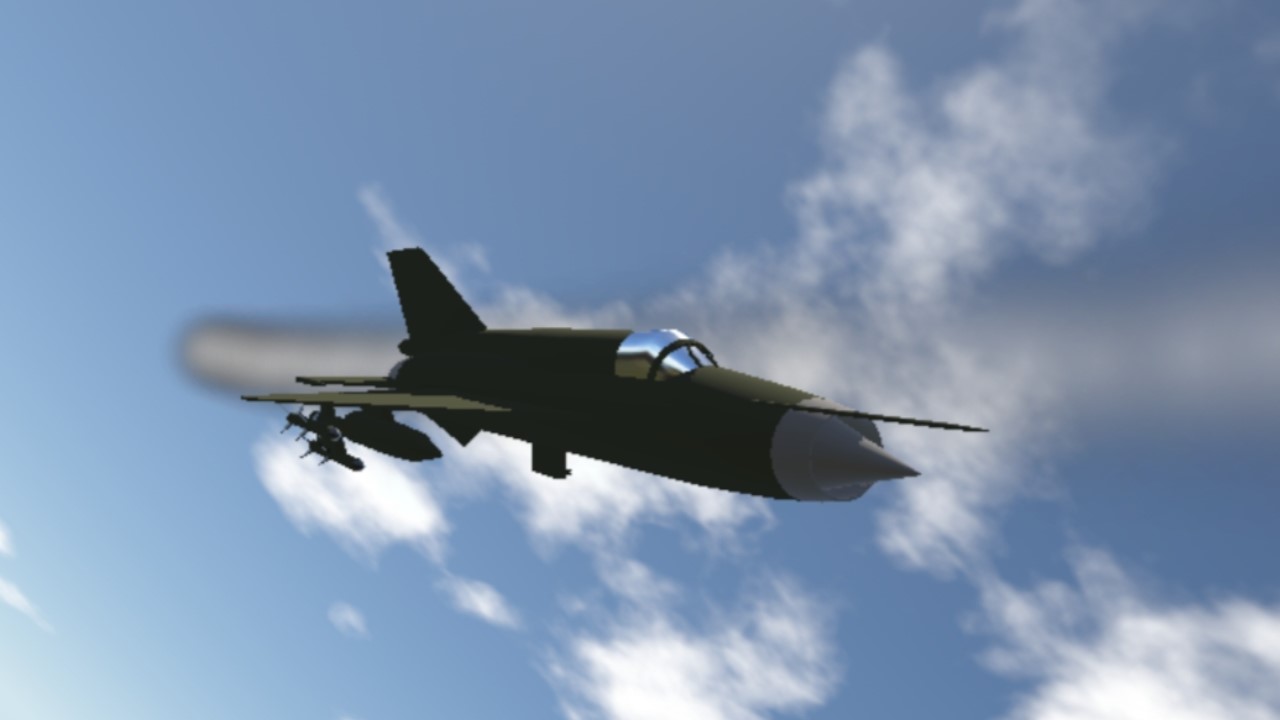
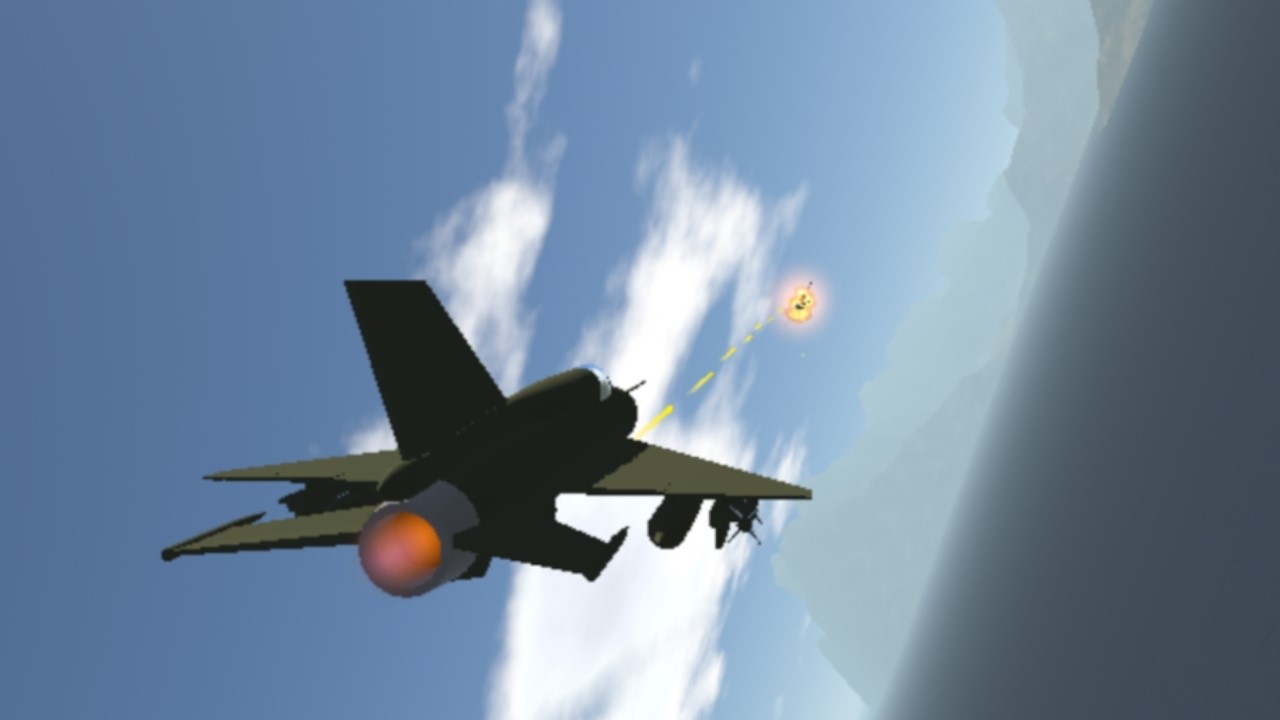
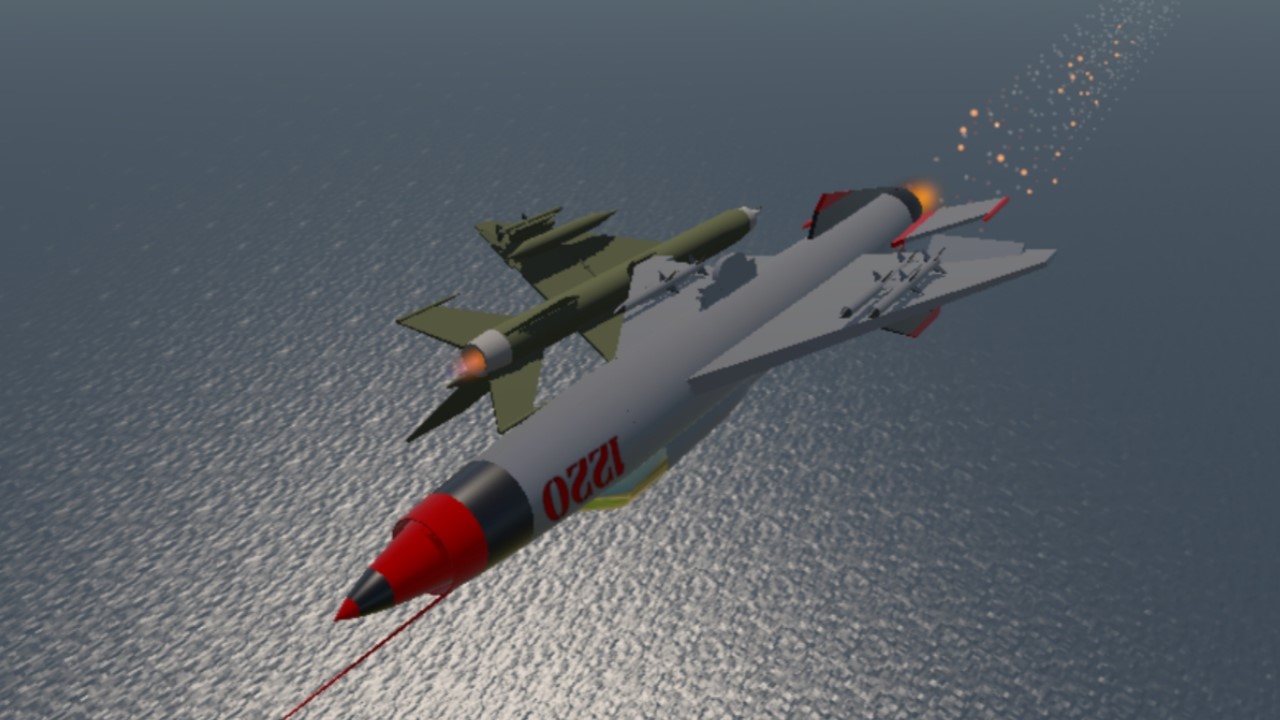
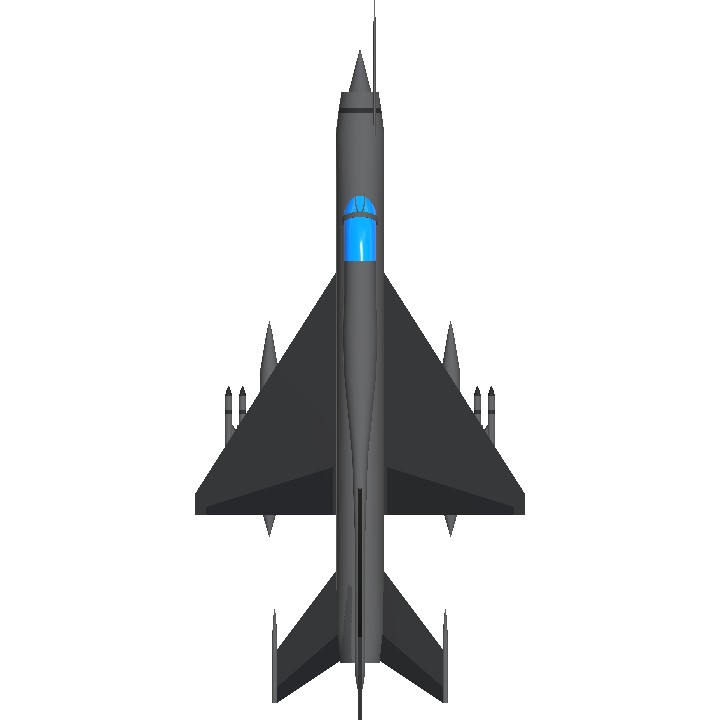
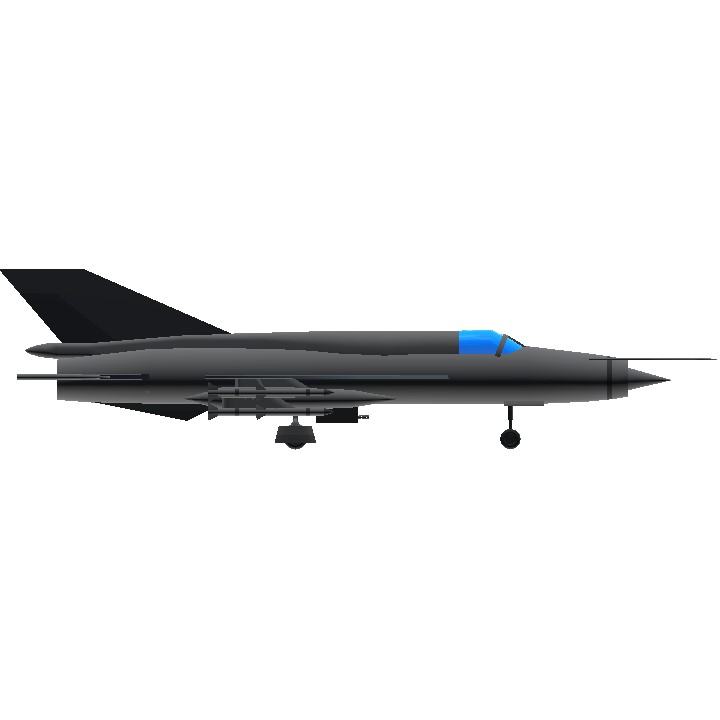
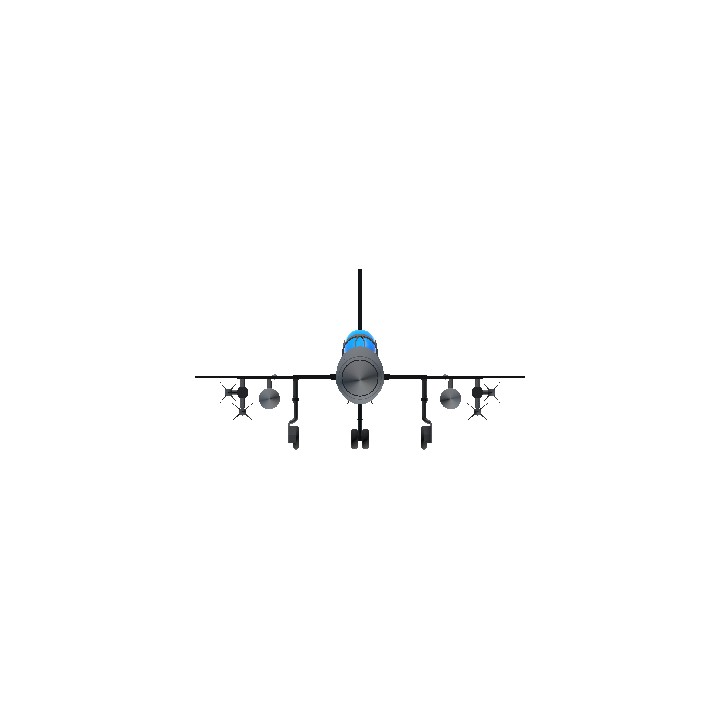
cool
And great screens .
Nice Mig with 78 parts . Great job .
1: @MiGFOXHOUND31BSM26
2: @cooldude321
3: @spsidearm
4: @Eagleman101SP